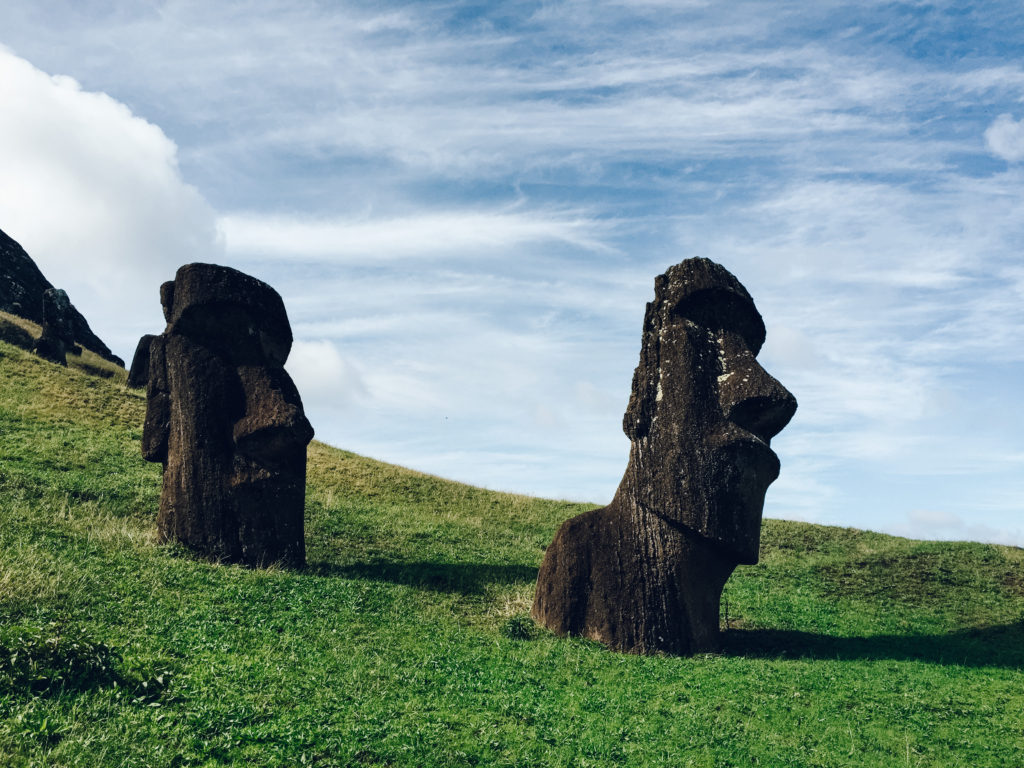
Writing this, I have to pinch myself to believe I have actually been to Easter Island! It is one the most remote inhabited places on earth – covering just 64 square miles, it is 1289 miles to the Pitcairn Islands and 2182 miles from the coast of Chile. Even just the name conjures up mystical images of strange stone men gazing out over the ocean. Variously known as Easter Island, Isla de Pascua and Rapa Nui (the name preferred by the island’s native Polynesian inhabitants), this small volcanic island sits in the South Pacific Ocean between Chile and Tahiti.
My wonderful friend S and I travelled to Easter Island whilst exploring northern Chile, and it really was a once-in-a-lifetime sort of trip. Seeing the sunset over the iconic and mysterious moai more than made up for the long (and very turbulent!) journey to get there. I hope this guide will inspire you to make the trek.
Don’t Miss
Rano Raraku – get up close to the moai, and see stages of their construction.
Anakena Beach – spend a lazy afternoon on a white beach under swaying palm trees.
Traditional dance show – beautiful traditional dress and infectious song and dance. Audience participation is obligatory!
Hike or cycle the Ring Road – there is something magical about exploring somewhere so remote under your own steam. The hike to the summit of Maunga Terevaka offers amazing 360 views of the island.
Need to Know
Weather Subtropical year-round. Wind and rain a constant.
Language Pascuan and Spanish
Currency Chilean Pesos
Nearest Airport Mataveri (IPC)
Getting Around Car, bike or tour
Staying in Touch Prepaid SIM cards are available in Santiago airport or the Hanga Roa Entel shop. Entel and Movistar offer the best coverage.
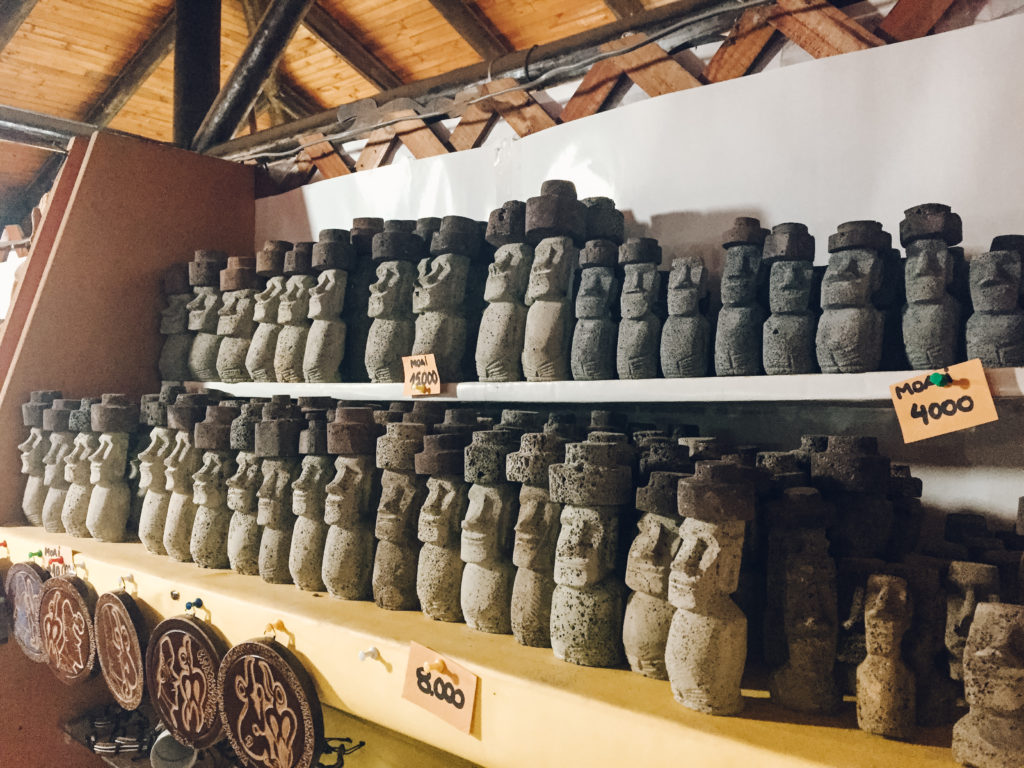
GETTING THERE
LATAM (formally LAN) is the only airline serving Easter Island. Flights to Tahiti go twice a week, whilst flights to and from Santiago are daily. Make sure to book a window seat on the left-hand side of the plane on the way there and back for the best views of the island.
On arrival you need to buy a park admission pass – $80 ($52,000 Chilean Pesos) for foreigners. The fee goes directly towards the protection and restoration of the moai. Be sure to keep your ticket on you as it will be checked at most sites.
COSTS
The simple fact of geography means that costs are high on Easter Island. One of the biggest expenses is transport. As only one airline (LATAM) flies the route, they can charge pretty much whatever they want. I recommend booking well in advance to get the best rates, and consider signing up to LATAM’s newsletter in advance to be notified of any sales or deals.
Once you are on the island, hiring a bicycle is not only a cost effective way to get around, but also one of my top recommendations for things to do! A day’s car hire is a cheaper option than a tour, and offers you the flexibility to plan your own route.
For accommodation, there are a few decent hostels and also a number of Airbnb options. Again, you will want to book far in advance to get the best rates and availability.
Given its isolation, and lack of viable agricultural land, almost all supplies must be shipped in, which unsurprisingly pushes prices up. So if you plan to self-cater to save some money, I suggest bringing some groceries with you from the mainland. As with much of Latin America, empandas are a fantastic (and delicious!) option for a cheaper lunch or dinner and can be found all over the island.
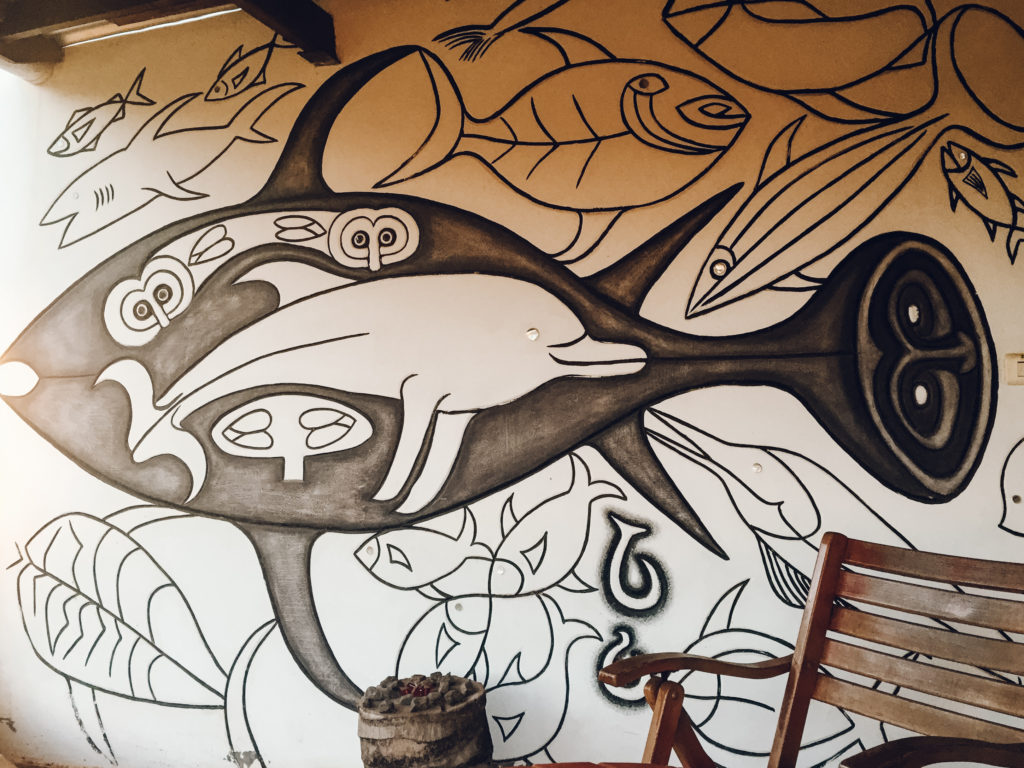
PROTECTING EASTER ISLAND
Easter Island has often been used as a salutary example of the need to protect our natural environment. It is generally agreed that Rapa Nui, once covered in large palm trees, was rapidly deforested soon after its initial colonisation around 1200 AD. For many centuries, the construction of the maoi was blamed for this complete deforestation. However, scientists increasingly now think the introduction of invasive species brought by settlers – specifically the Polynesian rat – may have played a large part. However, despite this deforestation, the Rapa Nui were able to farm and live effectively on the island for many centuries. It was the introduction of disease, destruction of property and enforced migration by South American and European slave traders in the 19th century that brought about the almost complete extension of the indigenous population.
Today, Easter Island has an ambitious plan to become self-sustainable and waste-free. However, given its diminutive size and isolation, this will be an uphill battle. The island has a severe waste management problem, and rising sea levels are increasingly threatening its shores. Although tourism is essential for the local economy and the livelihood of almost all families on the island, it is unavoidable that growing visitor numbers add pressure to the existing challenges the island faces.
I am a firm believer in the ‘Leave No Trace’ principles where ever I travel, and this is critical on Easter Island. So here are a few suggested guidelines…
- Waste – tourists on Easter Island produce a staggering seven tonnes of waste a day and the island’s recycling capacity is severely limited. Almost all waste is flown to Chile. Consider taking some of your waste away with you for recycling, collecting up any plastic you find on the beaches, and do everything you can to minimise the waste you generate. Refusing plastic straws and carrying a reusable water bottle are incredibly easy places to start.
- Stick to the paths – nearly 70% of the island suffers some degree of erosion. Stay on the designated paths to avoid damaging this already fragile ecosystem.
- Don’t touch the moai or walk on the ahu – not only does this risk damaging these magnificent structures, they are also revered as sacred burial sites by locals. Likewise, do not touch any of the petroglyphs as they are very fragile.
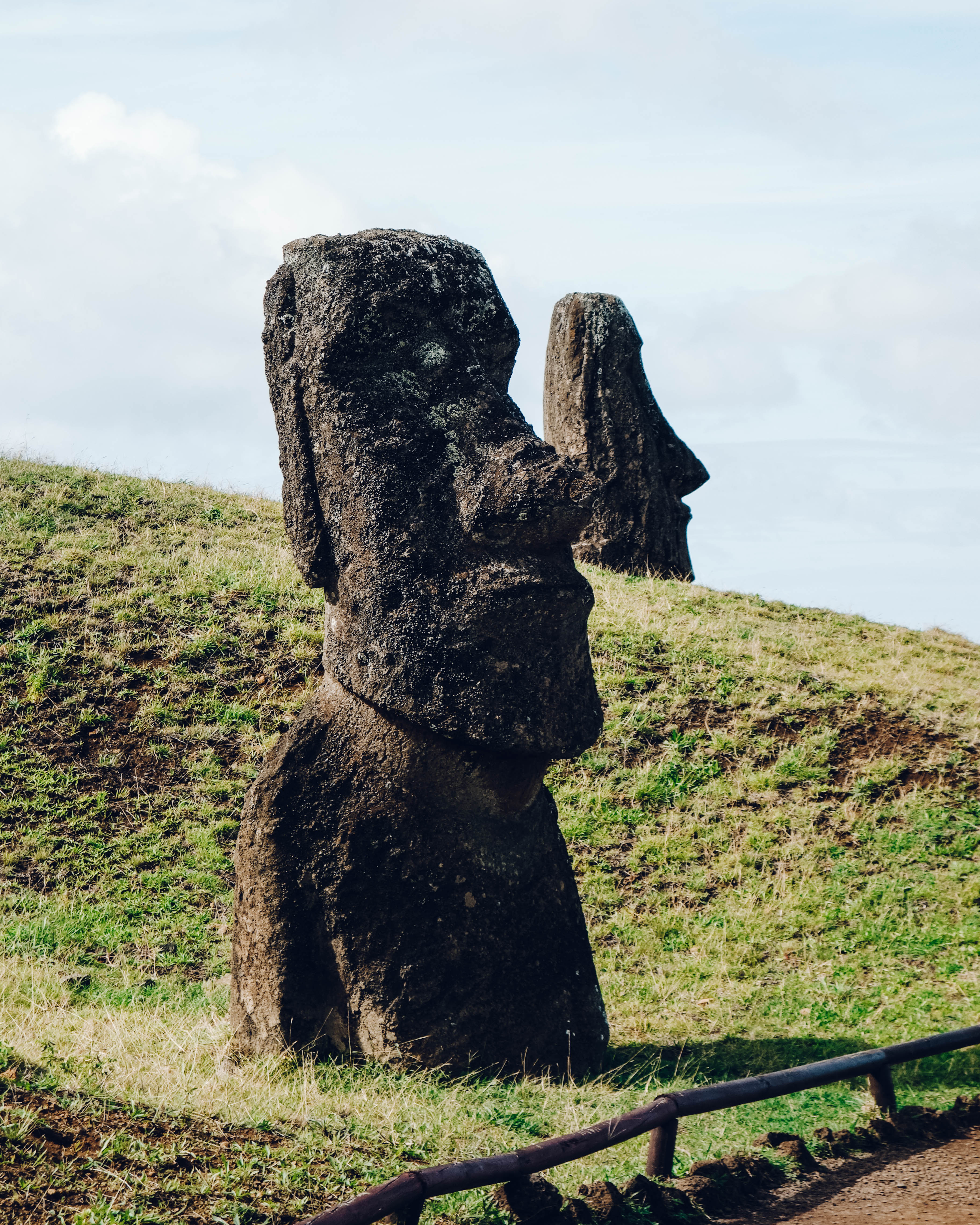
A Quick Guide to the Moai
The most recognisable image of Easter Island, the moai were sculpted around 1400 – 1650 AD by the indigenous Rapa Nui people. It is thought that they were built to commemorate ancestors. The giant carved figures are between 2m and 10m and all stand with their backs to the Pacific Ocean. They each have unique features, designed to mimic the appearance of their living counterpart. There are over 1000 moai in total: the largest is over 70 ft and weighs about 85 tons. The moai that remain standing today were restored over the last century. Touching the moai is forbidden.
The platforms on which the moai sit are known as ahu. These were village burial and ceremonial sites.
The construction of the moai has given rise to vigorous academic debate and more than a few conspiracy theories. Most recently archaeologists have concluded they were moved in a vertical position using ropes. Oral history talks of the moai “walking” to their platforms.
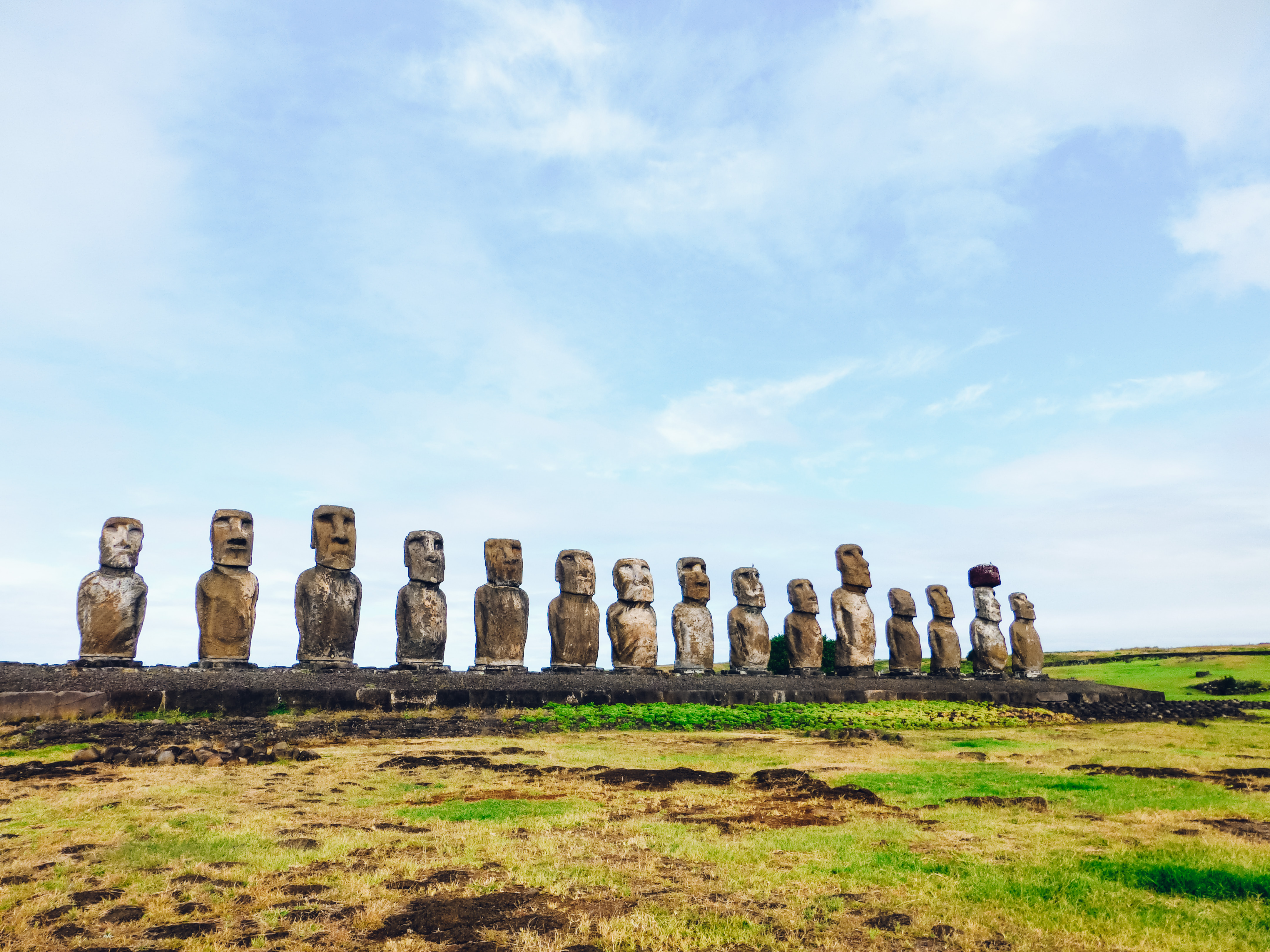
THINGS TO SEE
Ahu Tongariki – the largest and most impressive ahu sits at the foot of Rano Raraku Volcano. Fifteen statues face away from the ocean. Go early to see the sun creep up between the statues.
Ahu Tahai – an easy ten minute walk out of Hanga Roa, this site has three ahu platforms. This includes the only maoi on the island fully restored with coral marble eyeballs. If Ahu Tongariki is the place for sunrise, this is the place to catch sunset!
Anakena Beach – pure white sand – a rarity on Easter Island – fringed by palm trees and the moai of Ahu Nau Nau. This is reportedly where the first Polynesian settler, King Hoto Matu’a landed, and you will find an intricate wooden carving of his wife giving birth at the entrance. There are several lovely cafes alongside the beach, and you could easily spend a few hours relaxing here. The warm, calm waters are great for a swim.
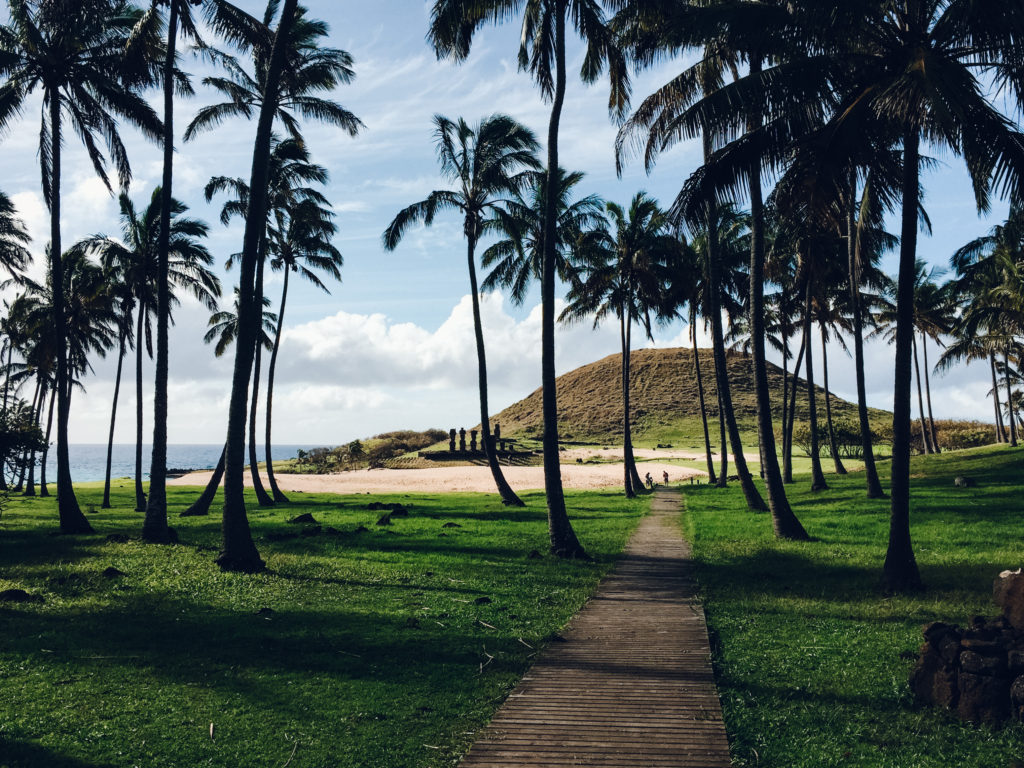
Ranu Raraku – the open quarry where the Rapa Nui people sculpted the moai. This was one of my favourite places on Easter Island as it was incredible to get so close to the moai, and see a glimpse of how they were made. The sheer scale and diversity of the statues is more evident here than anywhere else on the island.
Rano Kau – Easter Island’s geography has been shaped by its three volcanoes. The largest on the island, there is a path up around the rim of the crater and to a viewpoint which overs views across the lagoon and out to the South Atlantic. It is a straightforward two hour walk from Hanga Road to the crater.
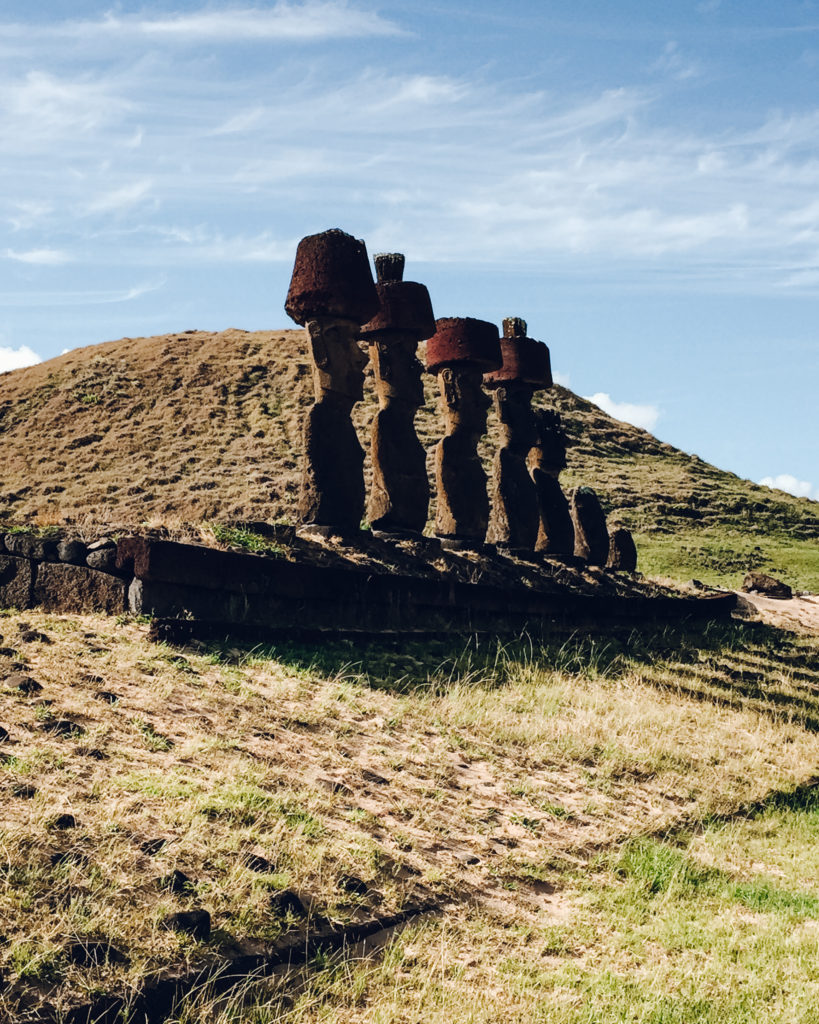
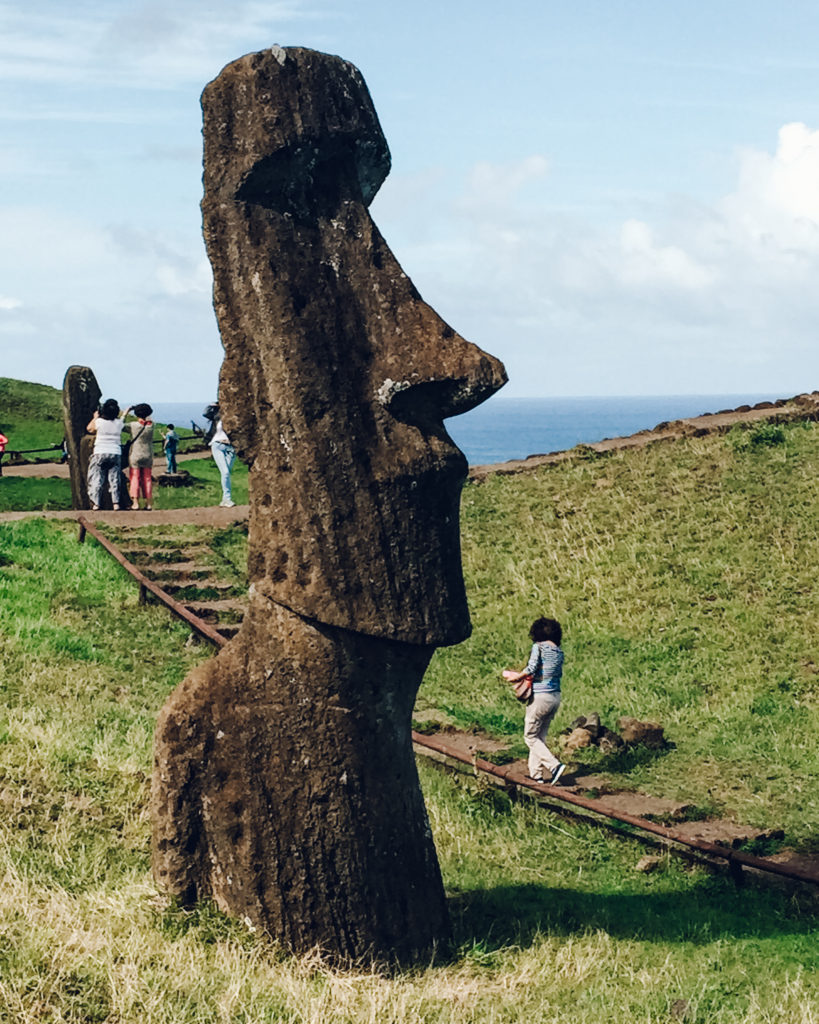
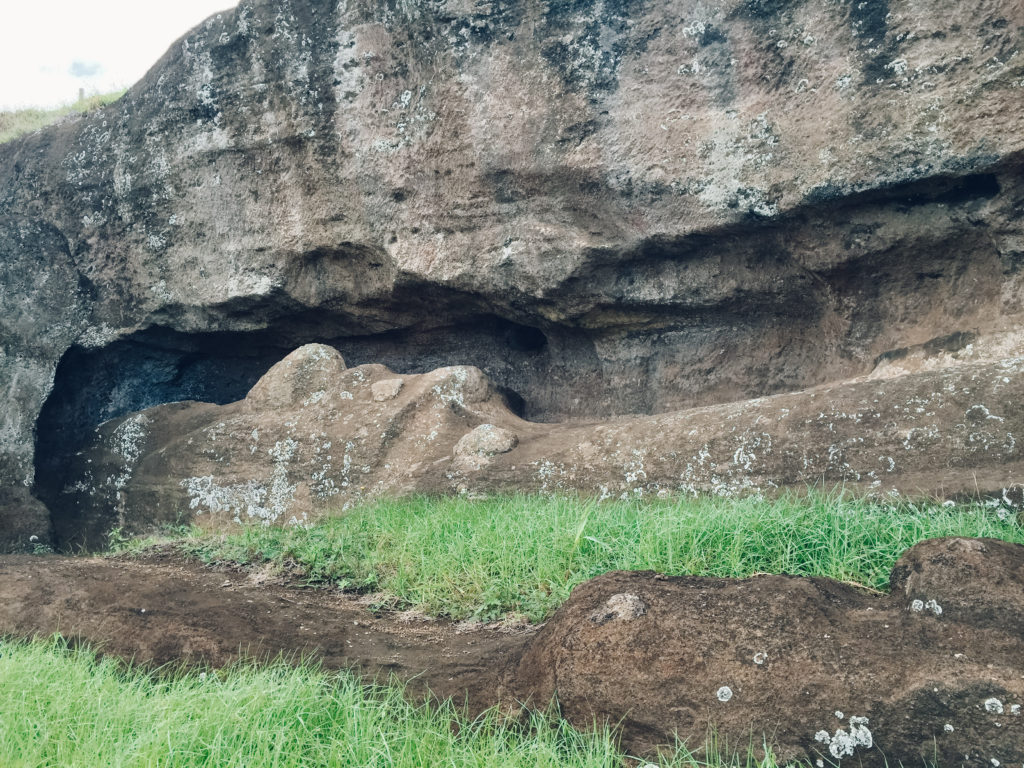
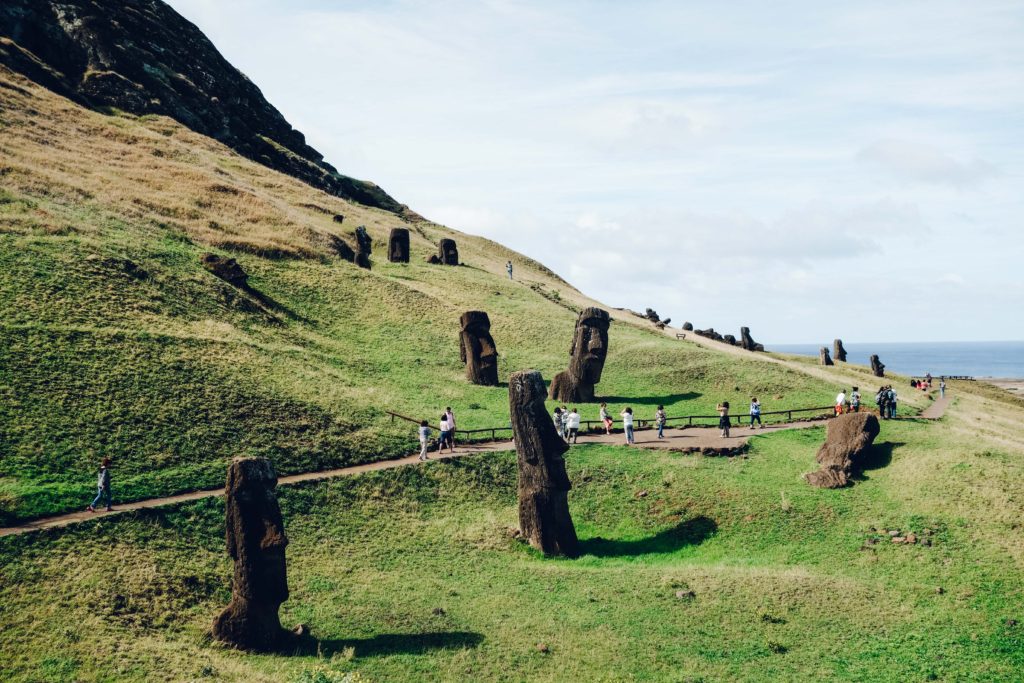
Orongo Ceremonial Village – this ceremonial village was the focus of the Tangata Manu (‘birdman’) religion: an island wide bird cult that emerged in the 18th and 19th centuries. Followers believed that birds had a mystical relationship with the gods and were able to unite the earth, sea and sky. The site also has great views out over nearby motu – offshore islands.
Sebastian Englert Archaeological Museum – if you don’t plan to go on a tour, this would be a great place to start your trip to learn a bit more about the history and culture of the island. The displays are very informative, and entry is free. The museum is named after a German missionary, who spent 30 years extensively documenting the island’s culture, language and legends.
THINGS TO DO
Go to a traditional dance show – music and dancing are a huge part of Rapa Nui culture, and a traditional dance show makes for a lively evening! There are several groups that perform regularly, so there is usually one on every evening. We went to Kari Kari (on the main street of Hanga Roa, 9pm on Tues, Thurs and Sat, $15) and it was excellent. Ask your hotel to book tickets in advance for you.
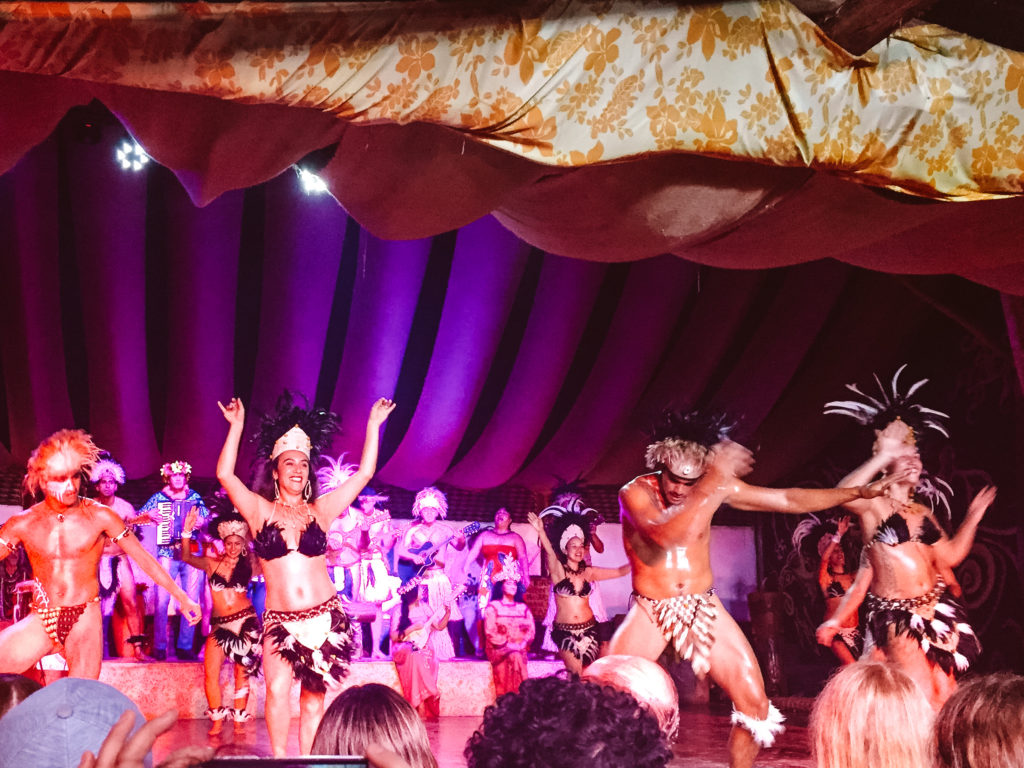
If you are keen to learn more about the traditions and culture of the Rapa Nui, during the first two weeks of February the island hosts the Tapati Rapa Nui Festival. A representative from each family will compete in different challenges, from physically demanding displays of skill, to craftwork and dancing. The penultimate day of the competition sees all of the participants and their families join a parade through the streets of Hanga Roa, dressed in traditional costume and accompanied by Rapanui music and dancing.
Hire a bike, hike or saddle up – We chose to rent bikes from the centre of Hanga Roa and spent a day cycling right around the Island. It was a lovely way to see the island and at a slow pace, but be warned there are one or two hills on the way back!
Climb Maunga Terevaka – the island’s highest point at 507m. It is only accessible on foot, or on horseback. The hike to the top is an easy 1.5 hours and the panoramic views from the summit are fantastic.
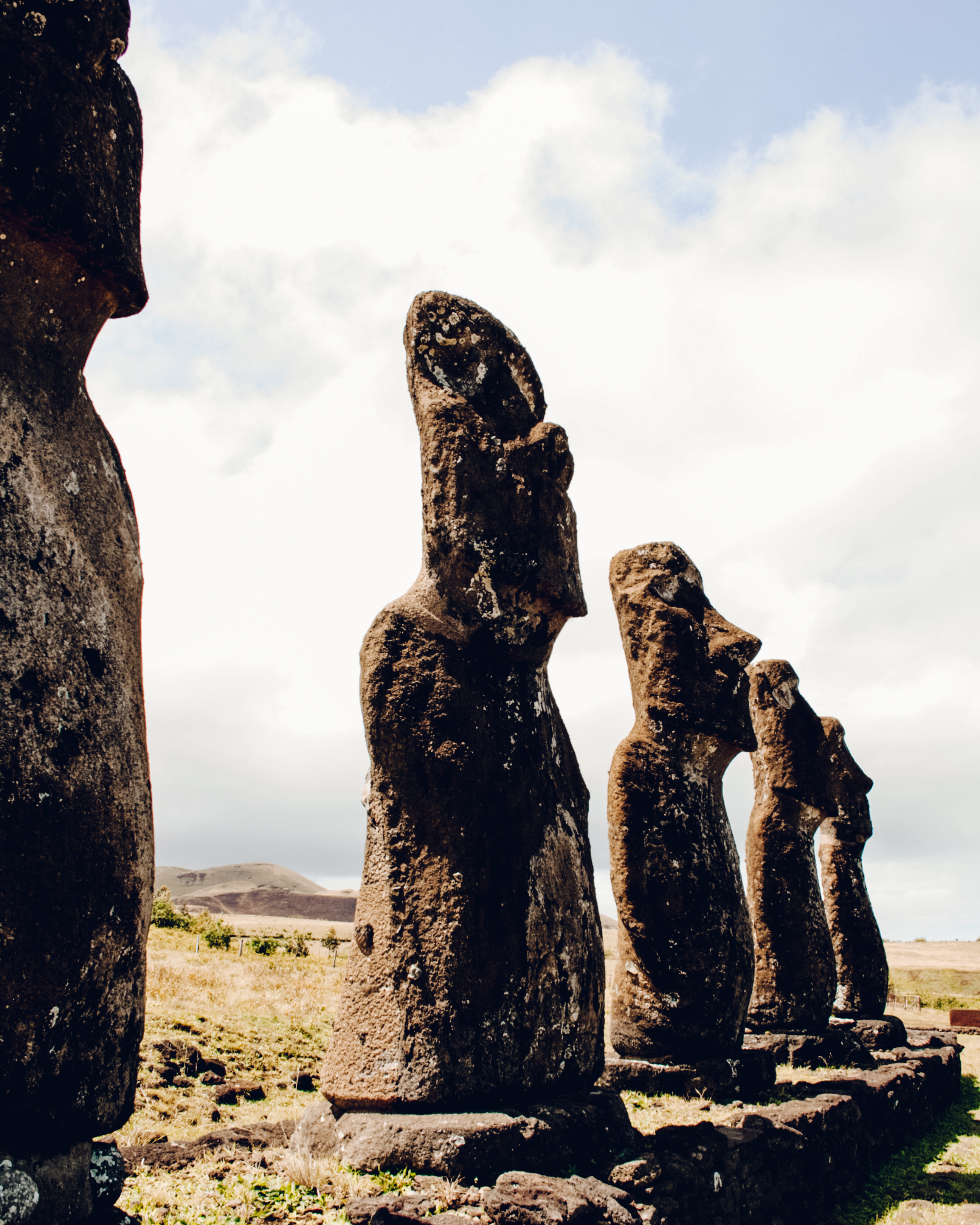
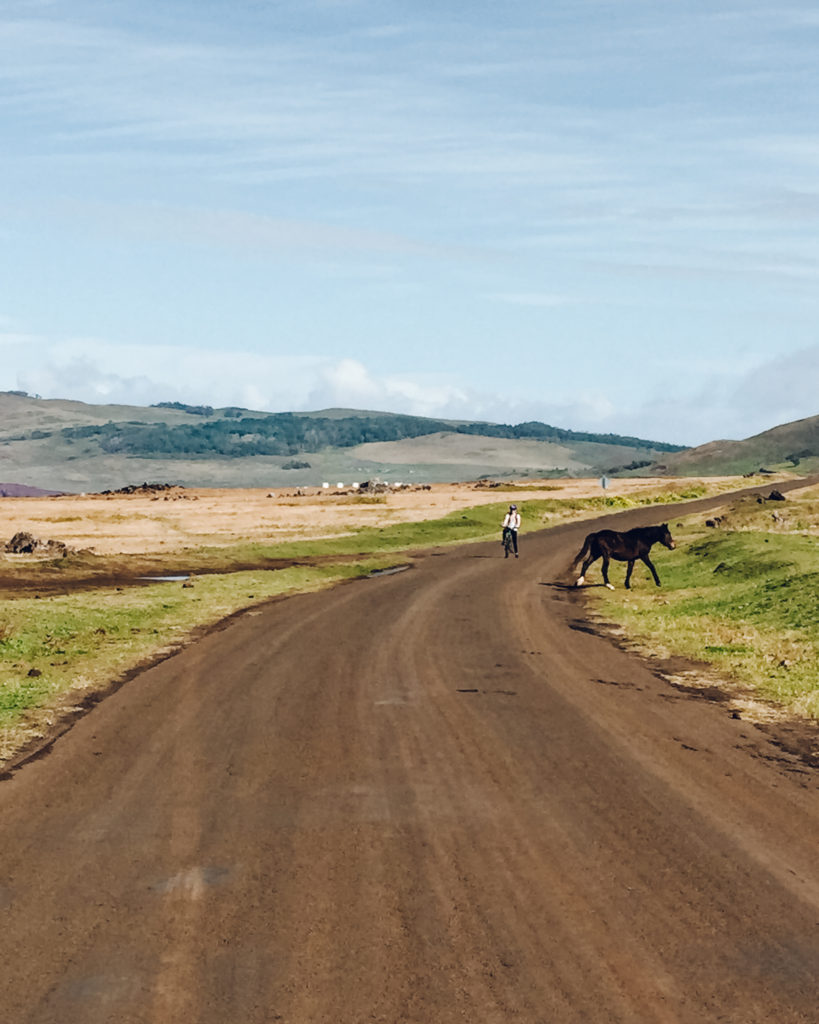
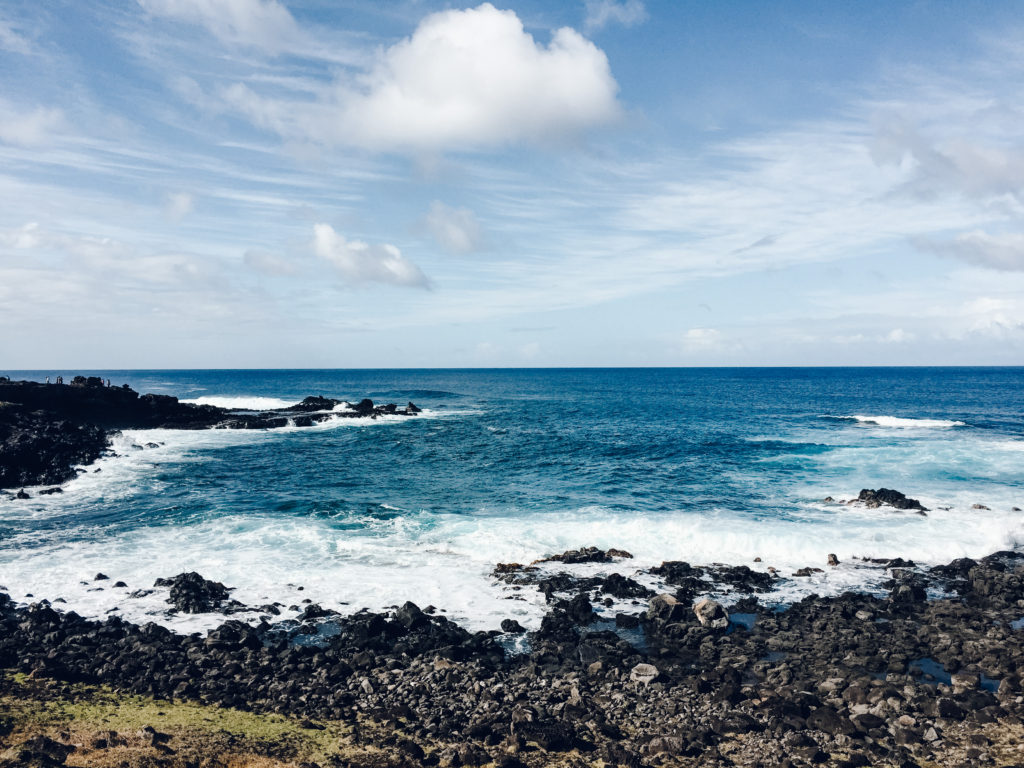
Snorkel or dive – amazing visibility, limited crowds and pristine coral formations are making Easter Island an increasingly popular diving location. Motu Nui, on the most south-western tip of the island, is considered the favourite.
See the sunset at Hanga Roa Harbour – snorkel at the nearby beach during the day for a chance to spot sea turtles, and stay to watch the sunset behind the imposing moai.
Get your passport stamped – as the island is part of Chile, your passport will not be stamped on arrival. However, you visit the post office (opposite Hotel O’tai) to get a completely legal stamp featuring the iconic moai! It must surely be one of the most unique you can bag, and definitely one I am rather proud to have!
WHERE TO EAT
Food on Easter Island is a mix of Polynesian and Chilean ingredients and flavours. Sweet potato, plantain and sugarcane are prevalent, as some of the few products grown on the island. Fish such as mahi mahi and tuna dominate, with plenty of shellfish such as lobster and prawns on offer.
Haka Honu – great ocean views and an international menu. Try the grilled fish and papaya chutney.
Te Ra-ai – the only place selling Umm Rapa Nui, Easter Island’s most traditional meal, cooked in the traditional manner. Meat, chicken and fish are cooked on plantain leaves and hot stones in a hole in the ground.
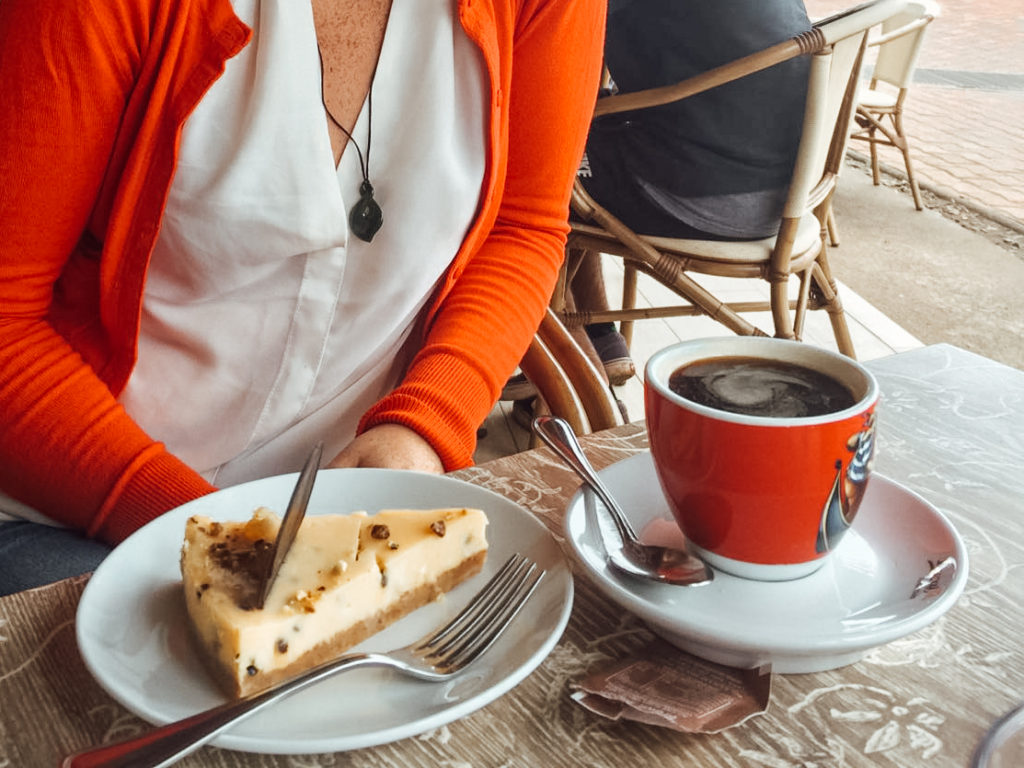
La Kaleta – declared by a Santiago newspaper to be the best seafood restaurant in Chile, this place is always popular. Great location to watch the sunset, whilst trying out their Polynesian menu.
Mikafe – sweet spot for a mid-afternoon slice of cake and a coffee right on the harbour.
Te Moana – lively eatery serving Polynesian meat and fish dishes. Great views and a good cocktail list.
WHERE TO STAY
Hotel Gomero – simple accommodation just away from the main street, we loved the lush garden and small swimming pool. Staff were very friendly, and the breakfast was excellent.
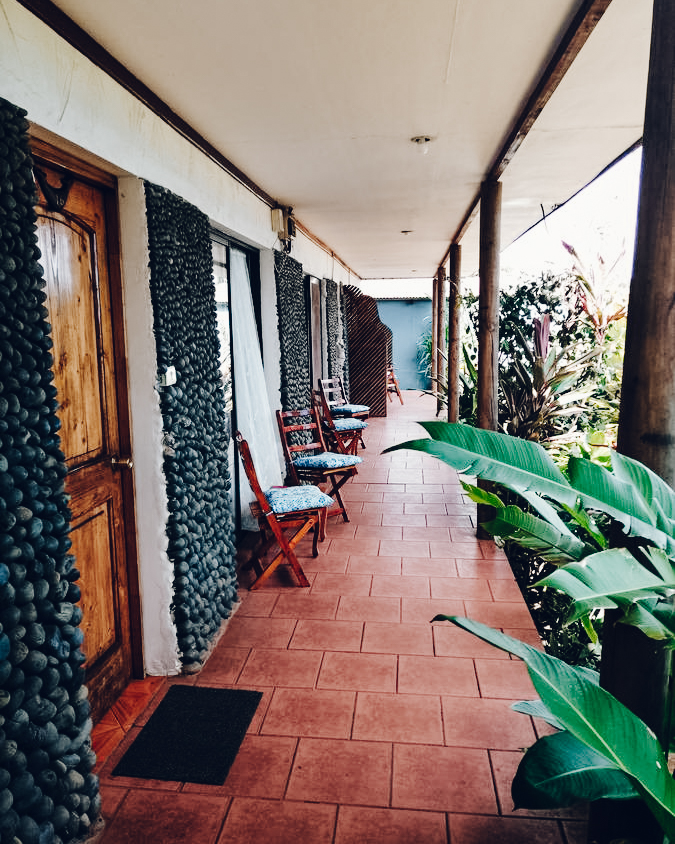
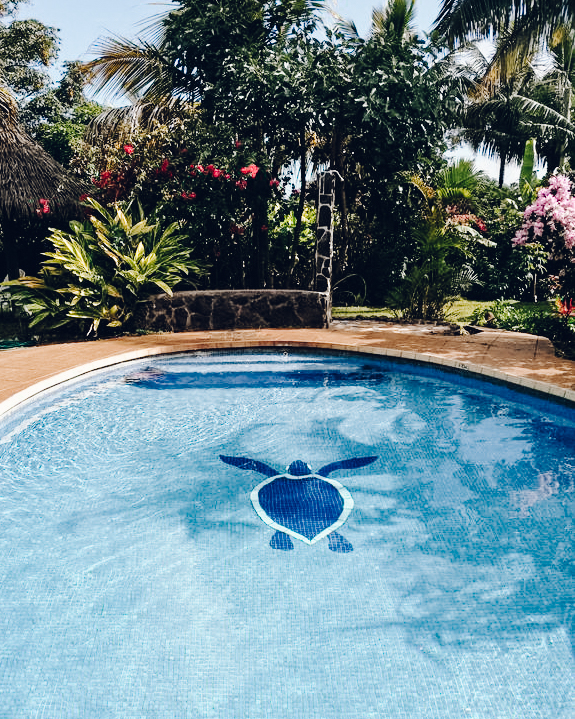
Hare Nua Boutique Hotel – gorgeous garden and tropical vibes with overflowing greenery and brightly coloured flowers. Good breakfast and easy walk to nearby bars and restaurants. Very friendly and informative staff.
Hangaroa Eco Hotel and Spa – if you want a bit of luxury this is the place. Rooms are built in a traditional style, in individual huts with grass covered roofs and stone walls. The restaurant here is highly recommended.
Explora Rapa Nui – the only all inclusive option on the island. Activities are included in the room rate, so could be a good option if you want everything organised without having to book multiple tours. Guides are excellent, and very knowledgable. Rooms have either garden or sea views, and are elegantly minimal.
I feel so incredibly privileged to have visited Easter Island, and I hope that this guide might have convinced you the mammoth journey is worth it. There are few places that capture the imagination quite like Easter Island and it is really in a once-in-a-lifetime trip. Check out the rest of my adventure guides for more unusual and bucket list destinations.




Leave a Reply